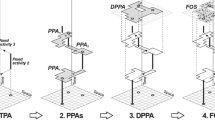Abstract
Accessibility, until now, has been a wide concept concerning different sectors mainly connected with the sciences of transport, economy, and urban geography. Among several definitions of accessibility, the most shared refer to the possibility that an individual has, to participate in one or a set of activities in a given place. In general, accessibility also refers to the characteristic of a service or of a resource to be easily enjoyed by a large number of users and this relies on the capacity of a city or a region to guarantee high levels of quality of life. Accessibility, thus, aims at improving the comfort of urban spaces for all users assuring the same opportunities for all. In this sense, accessibility also takes into account social aspects. Tourism, and activities linked to it, by definition, are based on at least two types of movement: a long-range movement to reach the destination from the point of origin: a close-range movement to carry out the tourist activity itself (visit, have fun, eat, reside). The issue of urban accessibility particularly relates to tourism activities if we consider that tourism requires several services which are not exclusively related to mobility. In these concerns, the study aims to define an accessibility index particularly referring to tourist services. The method pointed out in the theoretical part of the study has been tested on the metropolitan city of Naples (MCN). The results provide a potential source of information to support decision makers in pinpointing interventions to improve the accessibility of services at the metropolitan scale.
Access this chapter
Tax calculation will be finalised at checkout
Purchases are for personal use only
Similar content being viewed by others
Notes
- 1.
The Italian law 77/2020 connected to the Covid-19 emergency, provided for a classification of the economic activities linked to tourism. The classification considers the areas with high level of tourist density (tourist presences on territorial surface) and of the tourist load (tourist presences and number of residents). Istat elaborated 10 categories of municipalities individuated on the basis of their geographical characteristics and imposing some conditions (i.e.: for mountains municipalities the altitude of the inhabited center over 600 m; coastal areas if on the sea or if not bordering with the sea it has at least 50% of the municipal area at a distance from the sea equal to or less than 10 km; a municipality located on the coast of a lake or having at least 50% of the surface at a Euclidean distance from the lake edge of less than 3 km is considered a lake-tourism destination; cultural destination are defined on the basis of a set of variables linked to cultural attributes).
References
Boffi M (2020) Metodo e misurazione dell’accessibilità urbana. In: Castrignanò M, Colleoni M, Pronello C (eds) Muoversi in città. Accessibilità e mobilità nella metropoli contemporanea, FrancoAngeli, Milano, pp 43–46. 2012
Cass N, Shove E, Urry J (2005) Social exclusion, mobility and access. In: The sociological review. Blackwell Publishing Ltd, Oxford
Crouch GI (1992) Effect of income and price on international tourism. Ann Tour Res 19(4):643–664
Crouch GI (2011) Destination competitiveness: an analysis of determinant attributes. J Travel Res 50(1):27–45
Crouch GI, Ritchie JRB (1999) Tourism, competitiveness and societal prosperity. J Bus Res 44(3):137–152
De Rubertis RI (1994) Problemi dell’accessibilità. Lo Spazio Pedonale nel Disegno della Città. In: Proceedings of the Convegno Perugia, Perugia, Italy, 15
Dwyer L, Kim C (2003) Destination competitiveness: determinants and indicators. Curr Issues Tour 6(5):369–414
Hannerz U (1992) Esplorare la città. Antropologia della vita urbana. Il Mulino, Bologna, pp 207, 225, 228
Hansen WG (1959) Accessibility and residential growth. Doctoral dissertation, MIT
Hoepli (2020) Italian Dictionary. Hoepli.it
Hooper J (2015) A destination too far? Modeling destination accessibility and distance decay in tourism. GeoJournal 2015(80):33–46. https://doi.org/10.1007/s10708-014-9536-z
Ingram DR (1971) The concept of accessibility: a search for an operational form. Reg Stud 5(2):101–107
Istat (2020) Classificazione dei Comuni in base alla densità turistica, Legge 17 luglio 2020, n 77, art 182. https://www.istat.it/it/archivio/247191
Kliman ML (1981) A quantitative analysis of Canadian overseas tourism. Transp Res 15A(6):487–497
Lee H, Guillet BD, Law R, Leung R (2012) Robustness of distance decay for international pleasure travelers: a longitudinal approach. Int J Tour Res 14(5):409–420
Lefebvre H (1970) Il diritto alla città. Marsilio editori
Litman T (2008) Evaluating Accessibility for Transportation Planning. Victoria Transport Policy Institute (www.vtpi.org)
Lynch K (1970) Progettare la città. La qualità della forma urbana. Etaslibri, Milano. 1970
Martin CA, Witt SF (1987) Tourism demand forecasting models: choice of appropriate variable to represent tourists’ cost of living. Tour Manag 8(3):223–245
McKercher B, Lew A (2003) Distance decay and the impact of effective tourism exclusion zones on international travel flows. J Travel Res 42(2):159–165
McKercher B, Chan A, Lam C (2008) The impact of distance on international tourist movements. J Travel Res 47(2):208–224
Papa E, Carpentieri G, Guida C (2018) Measuring walking accessibility to public transport for the elderly: the case of Naples. TeMA J Land Use Mobil Environ, 105–116. https://doi.org/10.6092/1970-9870/5766
Sinclair R (1967) Von Thünen and urban sprawl. Ann Assoc Am Geogr 57(1):72–87
Tocci W (2010) Utopie ed eterotopie dell’accessibilità. In: Secchi R (ed) Future G.R.A. Prospettive edizioni, Roma, p 61
Zhang H, Gu C, Gu L, Zhang Y (2011) The evaluation of tourism destination competitiveness by TOPSIS & information entropy: a case in the Yangtze River Delta of China. Tour Manag 32(2):443–451
Author information
Authors and Affiliations
Corresponding author
Editor information
Editors and Affiliations
Rights and permissions
Copyright information
© 2021 The Author(s), under exclusive license to Springer Nature Switzerland AG
About this paper
Cite this paper
La Rocca, R.A. (2021). Urban Accessibility and Tourist Activity: An Application to the Metropolitan City of Naples. In: La Rosa, D., Privitera, R. (eds) Innovation in Urban and Regional Planning. INPUT 2021. Lecture Notes in Civil Engineering, vol 146. Springer, Cham. https://doi.org/10.1007/978-3-030-68824-0_62
Download citation
DOI: https://doi.org/10.1007/978-3-030-68824-0_62
Published:
Publisher Name: Springer, Cham
Print ISBN: 978-3-030-68823-3
Online ISBN: 978-3-030-68824-0
eBook Packages: HistoryHistory (R0)




